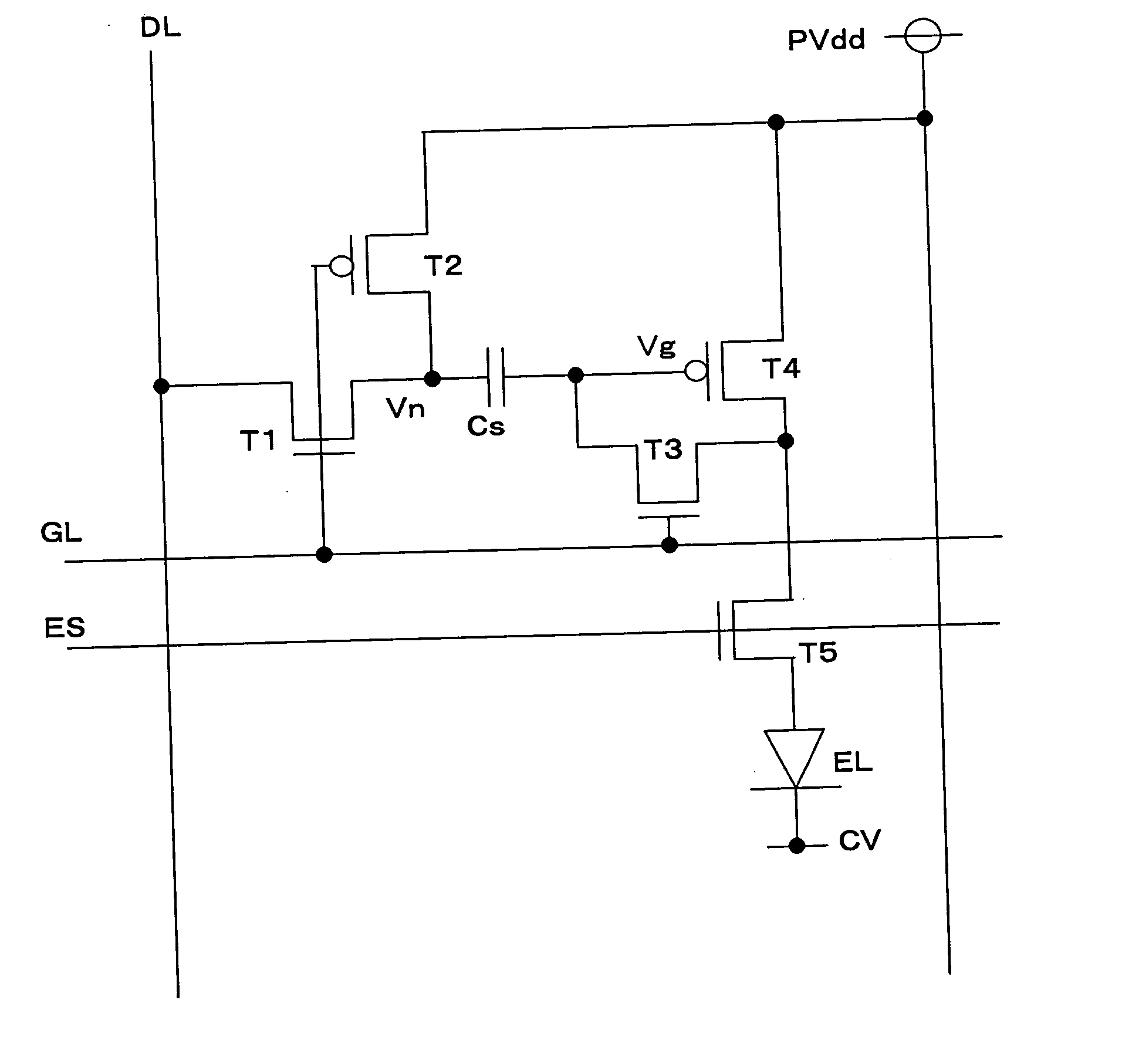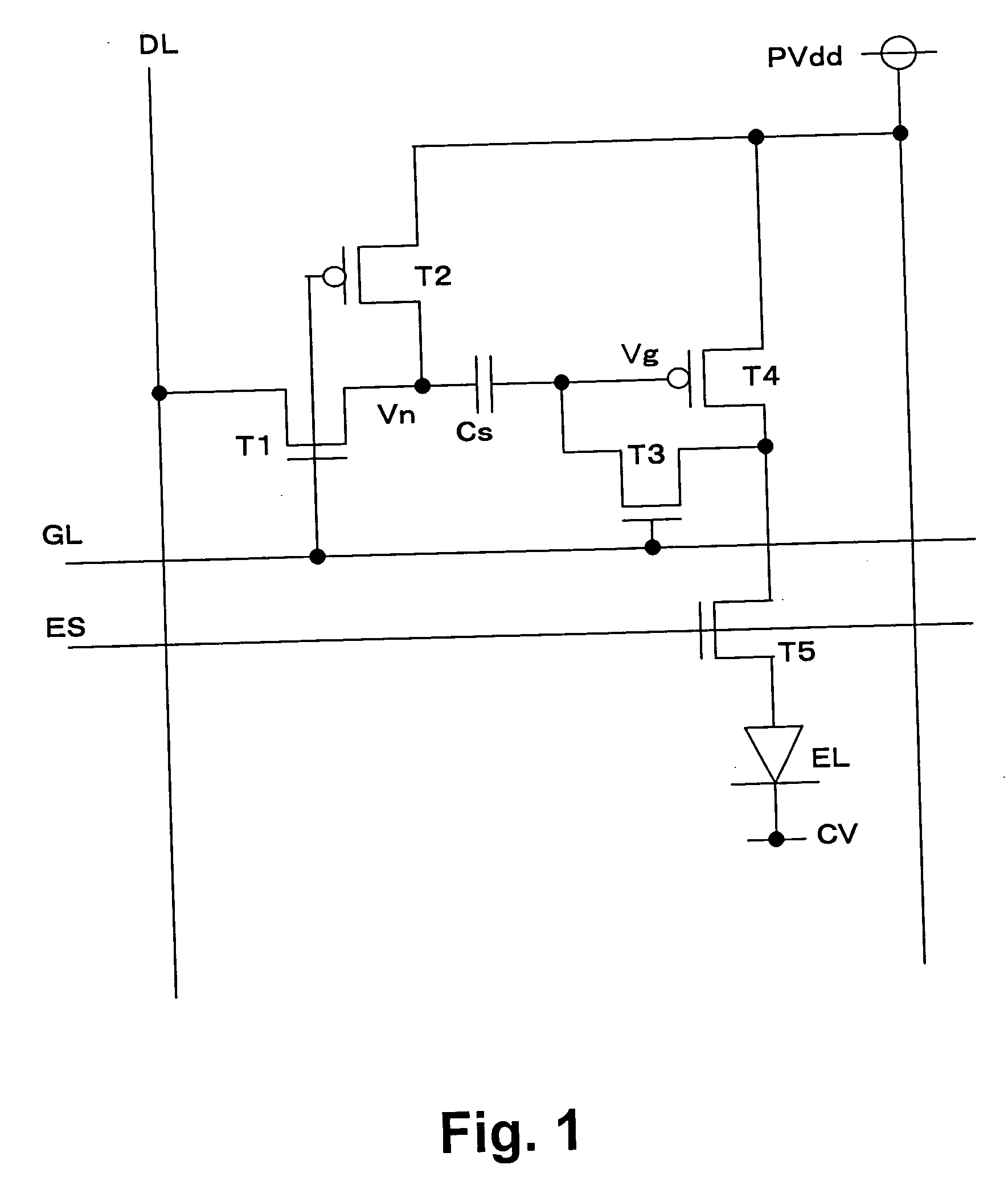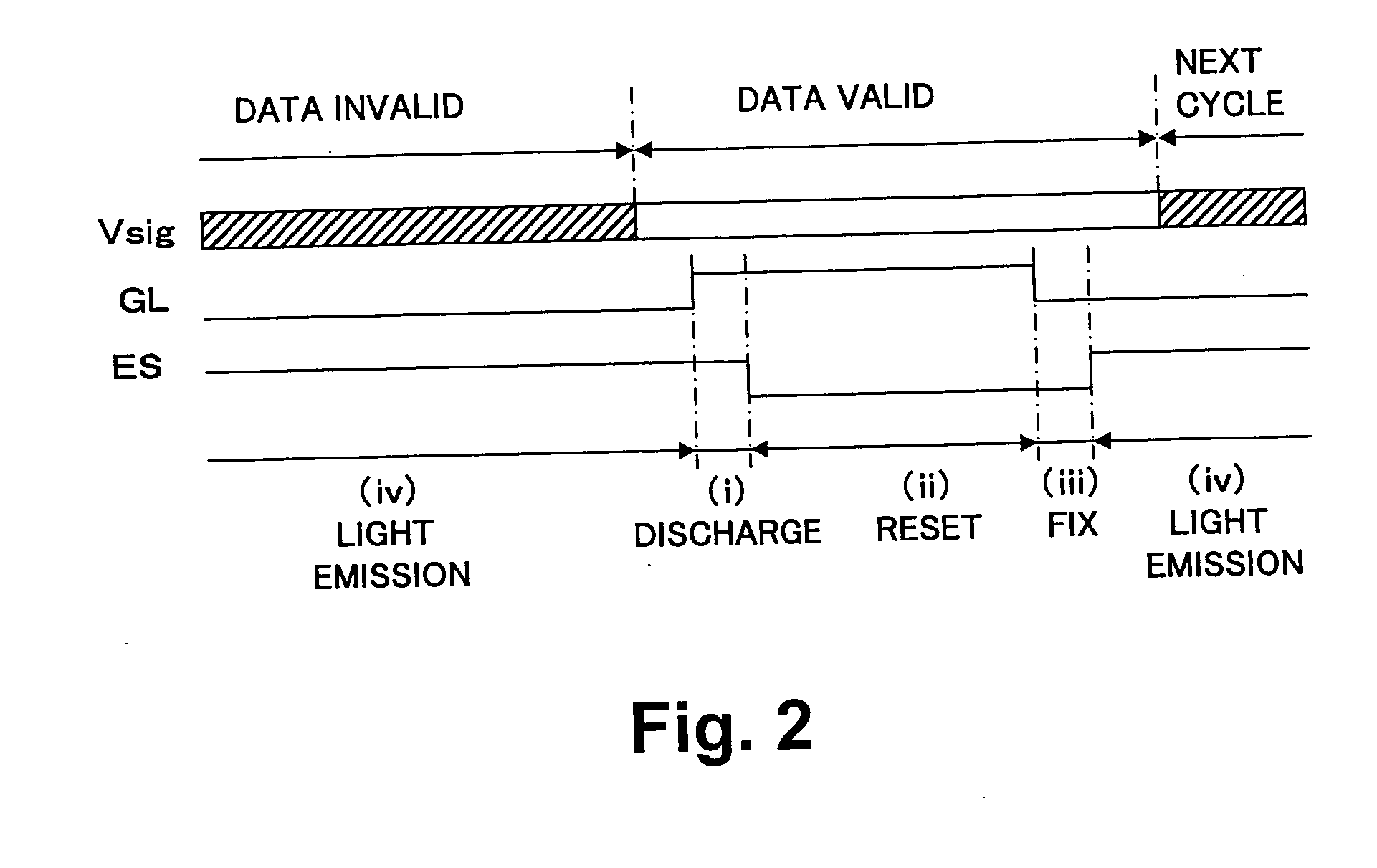Organic electroluminescence pixel circuit
a technology of electroluminescence and pixel circuit, applied in the field of organic electroluminescence, can solve the problems of reducing the aperture ratio, difficult to prevent the variation of the threshold value of switching the tfts on and off, and degrading the display quality, so as to achieve effective compensation
- Summary
- Abstract
- Description
- Claims
- Application Information
AI Technical Summary
Benefits of technology
Problems solved by technology
Method used
Image
Examples
first alternative embodiment
(A) First Alternative Embodiment
[0081]FIG. 11 shows a structure according to a first alternative embodiment of the present invention. In the first alternative embodiment, a p-channel transistor is employed for the selection transistor T1 and the short-circuiting transistor T3 and an n-channel transistor is employed as the potential controlling transistor T2. In this configuration, an operation similar to the above-described embodiment is enabled by inverting the H level and the L level of the gate line GL from the levels of the gate line GL in the above-described embodiment.
[0082] The on / off states of the selection transistor T1 and the drive controlling transistor T5 according to the control of the gate line GL and the emission set line ES are shown in FIG. 12, and are identical to those shown in FIG. 2.
second alternative embodiment
(B) Second Alternative Embodiment
[0083]FIG. 13 shows a structure according to a second alternative embodiment of the present invention. In the second alternative embodiment, a dedicated control line CS is additionally provided for controlling the potential controlling transistor T2, compared to the pixel circuit of the above-described embodiment. Therefore, it is possible to independently control the potential controlling transistor T2 using the control line CS. As shown in FIG. 14, with the control line CS, it is possible to switch the potential controlling transistor T2 off before the selection transistor T1 is switched on and to switch the potential controlling transistor T2 on along with the drive controlling transistor T5 after the selection transistor T1 is switched off.
[0084] In this configuration, although a number of lines along the horizontal direction is increased, it is possible to switch the potential controlling transistor T2 on and off at an optimum timing. In other ...
third alternative embodiment
(C) Third Alternative Embodiment
[0086]FIG. 18 shows another alternative embodiment of the present invention in which the selection transistor T1 and the potential controlling transistor T2 are connected to the gate line GL, a dedicated reset line RST is provided, and the short-circuiting transistor T3 is connected to the reset line RST. In this configuration, as shown in FIG. 19, the short-circuiting transistor T3 can be switched off using the reset line RST before the selection transistor T1 is switched off and the drive controlling transistor T5 is switched on.
[0087] Therefore, similar to the second alternative embodiment, it is possible to eliminate the period in which the potential controlling transistor T2 and the short-circuiting transistor T3 are simultaneously in the on state. With this structure, only two transistors, one being the selection transistor T1 and the other being the potential controlling transistor T2, need be provided near the gate line GL, which allows for e...
PUM
 Login to View More
Login to View More Abstract
Description
Claims
Application Information
 Login to View More
Login to View More - R&D
- Intellectual Property
- Life Sciences
- Materials
- Tech Scout
- Unparalleled Data Quality
- Higher Quality Content
- 60% Fewer Hallucinations
Browse by: Latest US Patents, China's latest patents, Technical Efficacy Thesaurus, Application Domain, Technology Topic, Popular Technical Reports.
© 2025 PatSnap. All rights reserved.Legal|Privacy policy|Modern Slavery Act Transparency Statement|Sitemap|About US| Contact US: help@patsnap.com



